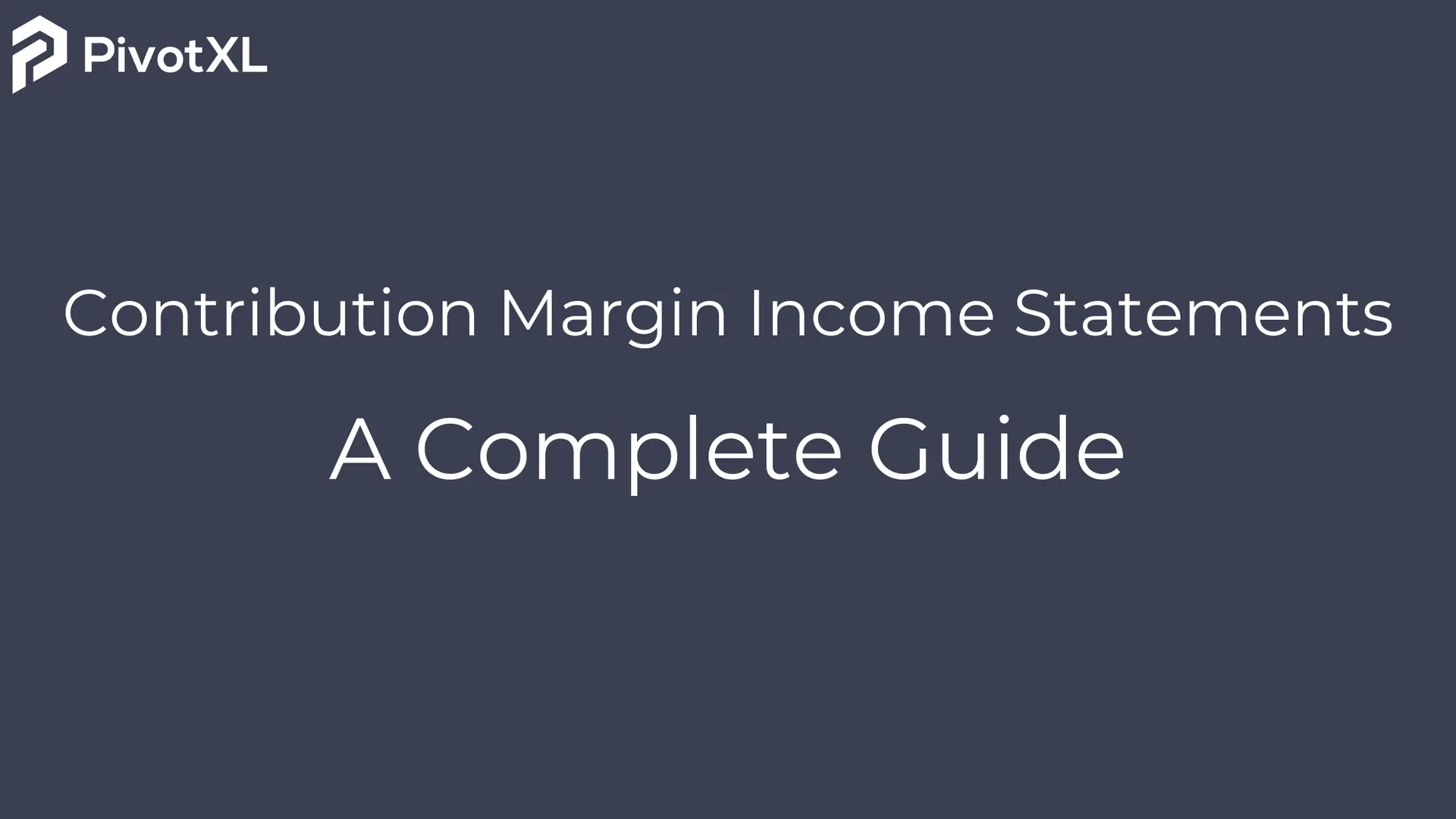If you’re serious about safeguarding your business’s finances, you need to get into the granular details of your profitability—and that means producing quality contribution margin income statements.
A contribution margin income statement is a document that tallies all of a company’s products and varying contribution margins together, helping leaders understand whether the company is profitable. It’s a useful tool for making decisions on pricing, production, and anything else that could improve profitability.
For instance, companies like Nike have hundreds of different shoe designs, each with different contribution margins. Putting these into a traditional income statement illustrates the bigger picture of which product lines are doing better than others or if any should be discontinued.
Contribution margin income statements are useful barometers for businesses to assess whether clear skies are ahead or if they need to prepare for a storm. It’s also a cornerstone of contribution margin analysis, giving enormous insight into a business’s overall financial position.
What Is A Contribution Margin?
In its simplest form, a contribution margin is the price of a specific product minus the variable costs of producing it. What’s left is the contribution margin, which gives a sense of how much is left over to cover fixed expenses and make a profit.
This figure helps companies understand how well a product or service is doing financially, how many units need to be sold to cover the company’s fixed costs, and how to start making a profit. The contribution margin can also help determine an organization’s break-even point—where revenue equals total costs, and the company isn’t making a profit, nor is it losing money.
In short, the contribution margin is like a safety net. A high contribution margin cushions the fall from unexpected costs and dips in sales. That’s why any business worth its salt will look to improve its margins wherever possible.
Don’t confuse contribution margin with cost of goods sold (COGS). COGS only considers direct materials and labor that go into the finished product, whereas contribution margin also considers indirect costs.
What Is a Contribution Margin Income Statement?
A contribution margin income statement is a financial document that separates variable costs from fixed costs, showing how much revenue is left to cover fixed costs and contribute to profit. It emphasizes the contribution margin—the money left over after variable costs are subtracted from sales revenue.
The contribution format income margin is essential for understanding the financial performance of individual products or services. It’s used to make informed decisions about pricing, production, and cost management.
Example of a Contribution Margin Income Statement
Contribution margin income statements aren’t rocket science, so let’s take a look at a standard example statement based on a beauty company.
| Item | Amount |
|---|---|
| Revenue | $100,000 |
| Variable Costs | $50,000 |
| Contribution Margin | $50,000 |
| Fixed Expenses | $25,000 |
| Net Profit | $25,000 |
In this example, the beauty company generates $100,000 in revenue. The variable costs (raw materials, packaging, commissions) total $50,000, leaving a contribution margin of $50,000. After covering fixed expenses (e.g., rent, salaries), the net profit is $25,000. This breakdown helps in understanding the financial performance of individual products or services.
How to Determine the Contribution Margin
The formula for determining the contribution margin is:
Contribution Margin = Sales Revenue − Variable Costs
To calculate the contribution margin, you need to understand the difference between fixed costs and variable costs.
Fixed Costs
These costs don’t fluctuate with the level of production or sales an item makes. Examples include office rent, salaries unrelated to the production of goods, and fixed administrative costs.
Variable Costs
Variable costs are directly related to the product’s production or sales and tend to increase as production scales. Common examples include raw materials, packaging, and the labor cost of making the product. Contribution margin also includes indirect costs like sales commissions or referral fees.
By subtracting these variable costs from revenue, you’ll arrive at the contribution margin.
Example of How to Find the Contribution Margin
Let’s use the beauty company example again to understand the process. Let’s assume the company sells 1,000 units of skincare products for $50 each, totaling $50,000 in revenue. The variable expenses per product amount to $28 (covering ingredients, packaging, and salesperson commissions).
Total Variable Costs:
1,000 × 28 = 28,000
Contribution Margin:
50,000 − 28,000= 22,000
This results in a $22,000 contribution margin. To express this as a percentage: 22,000 ÷ 50,000 = 0.44 or 44%
This means the beauty company has a 44% contribution margin on its skincare product.
How to Fill Out a Contribution Margin Income Statement
Putting together a contribution margin income statement involves a few simple steps:
- Calculate total revenue for the period (e.g., monthly or quarterly).
- Identify all variable costs for that period.
- Subtract variable costs from revenue to determine the contribution margin.
- Identify fixed costs for the same period.
- Subtract fixed costs from the contribution margin to calculate the net profit.
For the beauty company example:
| Item | Amount |
|---|---|
| Revenue | $100,000 |
| Variable Costs | $50,000 |
| Contribution Margin | $50,000 |
| Fixed Expenses | $25,000 |
| Net Profit | $25,000 |
Contribution Margin Income Statement vs. Traditional Income Statements
A contribution margin income statement focuses on separating variable costs from fixed costs, emphasizing the contribution margin. This format aids internal decision-making regarding pricing, production, and profitability.
In contrast, a traditional income statement categorizes expenses into operating and non-operating sections, calculating gross profit, operating income, and net income. It is primarily used for external financial reporting, offering a comprehensive overview of a company’s financial performance.
Is the Contribution Margin the Same as Income?
No, contribution margin and income are two distinct metrics.
While the contribution margin shows the money left over to cover fixed expenses and contribute to profit, income (or net profit) refers to the overall profitability of the business after all expenses, including taxes and interest.
Contribution Margin vs. EBIT and EBITDA
While the contribution margin is related to profitability, it differs from EBIT (Earnings Before Interest and Taxes) and EBITDA (Earnings Before Interest, Taxes, Depreciation, and Amortization).
- EBIT looks at the entire company’s profitability after considering both variable and fixed costs.
- EBITDA focuses on operating expenses and removes the effects of financing, accounting, and tax decisions.
In contrast, the contribution margin only examines individual product profitability, helping businesses make better decisions on product pricing and cost management.
The Bottom Line on Contribution Margin Income Statements
Now that you understand the contribution margin income statement and how it differs from a traditional income statement, it’s clear how valuable this tool can be for business leaders looking to improve profitability.
To help streamline the process of creating and analyzing these income statements, PivotXL offers powerful financial planning and analysis software, making it easy to generate reports, track variable and fixed costs, and gain actionable insights into your company’s financial performance.
Ready to get started? Make better decisions with confidence and improve your bottom line using PivotXL’s easy-to-use tools.



